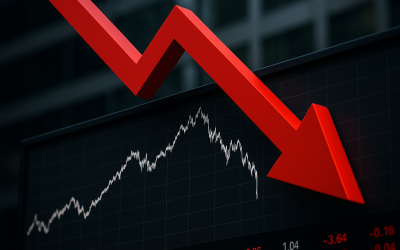US Tech Resilience Hinges on Breaking China’s Rare Earth Monopoly Before Supply Chains Snap
The dominance of China in the rare earth elements (REE) market is a strategic vulnerability for US technology, defense, and clean energy sectors. This article dissects the real-world risks, exposes the systemic dependencies, and outlines what must change to safeguard American innovation and security before the next supply chain crisis hits.
The Strategic Chokehold: How China Cornered Rare Earths
Rare earth elements are the backbone of modern technology—found in everything from smartphones and electric vehicles to advanced military systems. Despite their name, rare earths are not particularly scarce, but their extraction and refinement are complex, environmentally taxing, and capital-intensive. Over the last three decades, China has methodically captured the global REE supply chain, now controlling over 80% of global production and nearly all refining capacity.
China’s strategy was straightforward but ruthless: flood the market with low-cost rare earths, drive out global competitors, and then consolidate control. Western nations, chasing short-term cost savings and environmental optics, shuttered domestic mines and ceded processing expertise. The result is a brittle, single-point-of-failure system where US tech and defense supply chains depend on a geopolitical rival for mission-critical materials.
Key facts:
- China produces over 80% of the world’s rare earths and refines over 90%.
- The US imports nearly all its rare earths, with 74% coming directly from China (USGS, 2023).
- Rare earths are essential for F-35 fighter jets, wind turbines, electric vehicles, and semiconductors.
The real story isn’t just about minerals—it’s about systems-level risk. Any disruption, whether from trade disputes, geopolitical tension, or internal Chinese policy shifts, could paralyze US industries overnight. The 2010 Chinese embargo on Japan over the Senkaku Islands dispute was a warning shot the West largely ignored.
Consequences of Complacency: What’s at Stake for US Tech and Security
It’s tempting to view rare earths as just another commodity, but that’s a dangerous fallacy. The entire US innovation engine—AI, green energy, advanced manufacturing, and defense—runs on a steady supply of these elements. If China weaponizes its monopoly, the fallout will be immediate and severe.
Consider the following scenarios:
- Defense Disruption: The Pentagon’s most advanced weapons, from guided missiles to stealth aircraft, rely on rare earth magnets and alloys. A supply cut would cripple readiness and erode deterrence.
- Tech Sector Paralysis: Consumer electronics, data centers, and 5G infrastructure all require rare earths. Production halts would ripple through the global economy, stalling innovation and eroding US tech leadership.
- Clean Energy Setback: Wind turbines, EV motors, and grid storage depend on rare earths for efficiency and durability. Supply shocks would stall decarbonization efforts and hand China a competitive edge in green tech.
Who benefits from the status quo? Chinese state-owned enterprises, which enjoy pricing power and geopolitical leverage. Who’s at risk? US manufacturers, workers, and national security—caught flat-footed by a crisis decades in the making.
Why Substitution and Recycling Aren’t Silver Bullets
There’s been much talk about substituting rare earths with alternative materials or scaling up recycling. While these are part of the solution, they are not panaceas. Substitution often comes with performance trade-offs; for example, non-rare earth magnets are less efficient and heavier, undermining the very technologies they’re meant to support.
Recycling rare earths from end-of-life products is promising but faces steep logistical and economic hurdles. Collection rates are low, separation is technically challenging, and current recycling volumes are a rounding error compared to demand. Moreover, recycling infrastructure itself is dependent on a steady supply of raw materials to be viable at scale.
Bottom line: Substitution and recycling are necessary, but not sufficient. Without a robust domestic supply chain—from mining to processing to manufacturing—the US remains exposed.
Building Resilience: What a Strategic US Response Looks Like
Breaking China’s rare earth monopoly is not about self-sufficiency at any cost—it’s about building a resilient, diversified supply chain that can withstand shocks. Here’s what a serious, systems-level response requires:
- Domestic Mining and Processing: Fast-track permitting and investment for US rare earth projects, with strict environmental oversight but streamlined regulatory timelines. The Mountain Pass mine in California is a start, but processing capacity must be rebuilt domestically.
- Allied Supply Chains: Forge deep partnerships with allies like Australia, Canada, and the EU to co-invest in mining, processing, and R&D. Shared infrastructure and technology transfer can dilute China’s market power.
- Strategic Stockpiling: Establish a national rare earth reserve, akin to the Strategic Petroleum Reserve, to buffer against short-term disruptions and price shocks.
- Industrial Policy and Incentives: Use targeted subsidies, tax incentives, and federal procurement to jumpstart domestic rare earth manufacturing and downstream industries.
- Innovation in Processing and Recycling: Fund breakthrough research in cleaner, more efficient extraction and recycling technologies to reduce environmental impact and dependence on legacy methods.
Leadership means moving beyond rhetoric and pilot projects. It means aligning federal, state, and private sector action around a clear, measurable goal: reduce China’s share of the US rare earth supply chain to below 50% within five years.
Signals to Watch: What Will Actually Move the Needle?
Ignore the press releases and focus on hard metrics. The following signals will tell you if US tech resilience is improving or if it’s just more talk:
- Actual US production and processing volumes rising year-over-year, not just announced investments.
- Long-term offtake agreements between US manufacturers and non-Chinese rare earth suppliers.
- Federal procurement contracts that specify non-Chinese rare earth content in defense and infrastructure projects.
- Allied joint ventures and shared R&D facilities coming online, not just signed MOUs.
- Reduction in price volatility and supply disruptions traced to non-Chinese sources.
Until these signals are visible, assume the US remains vulnerable. Strategic resilience is measured in tons shipped, contracts signed, and factories built—not in policy papers or conference speeches.
Conclusion
The US cannot afford to sleepwalk into another supply chain crisis. Breaking China’s rare earth monopoly is not just a matter of economic competitiveness—it’s a national security imperative. Real resilience demands coordinated action, measurable outcomes, and a relentless focus on reducing systemic risk before the next shock hits. The clock is ticking, and only decisive leadership will change the outcome.



0 Comments